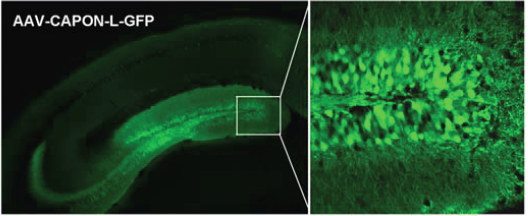Original link:Metaorganisms - Promoter Optimization
The current main research directions in basic research and development are the modification of lentivirus (LV) vectors, screening of adeno-associated virus (AAV) serotypes, optimization of specific promoters, comprehensive development of CRISPR/CAS technology with in vivo applications as the core, and the development of other latest biological research tools.
The promoter elements of viral vectors determine the specificity of viral expression. In order to conduct targeted research or gene therapy, we need to continuously develop and optimize promoters suitable for specific cells or tissues. At present, the R&D department of Heyuan Foundation focuses on optimizing and screening promoters for specific cells in different tissues or organs, and also welcomes cooperation projects in promoter research and development.
List of commonly used promoters
CAG/CBG/CMV/EF1a | Commonly used broad-spectrum promoters | GFAP | Astrocytes (long promoters) |
hSyn | Mature neurons | shortGFAP | Astrocytes (short promoters) |
CaMKIIα | Projection neuron | GfaABC1D | Astrocytes |
GAD67 | GABAergic interneurons | Iba1/CX3CR1 | Microglia |
mDLx | GABAergic interneurons | MBP | Oligodendrocyte |
fPV | PV+interneuron | NG2/NGL2 | Oligodendrocyte precursor cells |
fNPY | NPY+interneuron | TH | Catecholaminergic neurons(DA、NE、E) |
fSST | SST+interneurons | PRSx8 | Noradrenergic neurons |
DAT | Dopaminergic neurons | ChAT | Cholinergic neurons |
L7pcp2 | Purkinje cell | D1/D2 | Dopamine D1/D2 receptor neurons |
FEV | Serotonin neurons | HCRT | Orexin neurons in the hypothalamus |
cTNT | Cardiac muscle cells | TBG | liver |
Specific promoter infection cases

AAV8-TGB-Fabp1[1](TGB liver specific promoter)
AAV-CaMKIIα-NpHR-EYFP[2](CaMKIIαDivine Shooting Meridian Element Specific Promoter)

AAV-Syn-CAPON-L-GFP[3](SynMature neuron specific promoter)
AAV-GFAP- AAV–Ascl1/mCherry [4](GFAPAstrocyte specific promoter)
reference:
[1] Pi H. et al., (2019) Long-term exercise prevents hepatic steatosis: a novel role of FABP1 in regulation of autophagy-lysosomal machinery. FASEB J. doi: 10.1096/fj.201900812R.
[2] Li YD, et al., (2017) A distinct entorhinal cortex to hippo-campal CA1 direct circuit for olfactory associative learning. Nature Neuroscience.
[3] Zhu L J, et al., (2014) CAPON-nNOS coupling can serve as a target for developing new anxiolytics. Nature Medicine.
[4] Liu Y G, et al., (2015) Ascl1 Converts Dorsal Midbrain Astrocytes into Functional Neurons In Vivo. J. Neuroscience.







 Back
Back





















